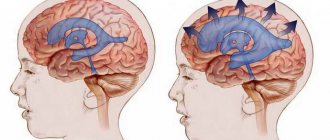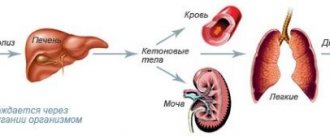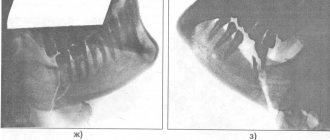October 10, 2020 | Comments: | Views: 112
Home » Health » Periodontitis symptoms and treatment
Rate this article:
( 1 votes, average score: 5.00 out of 5)
Periodontitis is the inflammation of the tissues that fix the tooth in the socket. Progressive periodontitis threatens the destruction of an area of the jaw called the alveolar process and the loss of teeth.
Depending on the severity and localization of inflammation, periodontitis occurs:
- acute – with and without fistulas;
- chronic - localized and generalized, with hypertrophy of the papillae or with the development of pericoronitis.
Periodontitis begins with gingivitis. The inflammatory process develops during this period without affecting the periodontal junction.
In the absence of therapy, gingivitis turns into periodontitis: the gums become bare and periodontal pockets form. Due to the accumulation of food debris in them, the proliferation of bacteria, an abscess develops, and fistulas appear on the gums.
Periodontitis increases the risk of coronary disease, respiratory diseases, stroke, preeclampsia, premature birth, and postmenopausal breast cancer.
Types of periodontitis
Three types of this disease can be distinguished. This is periodontitis of mild, moderate and severe degrees. The use of a special probe makes it possible to see how deep the gum pockets are; x-rays show the general situation and, based on these data, the degree of the disease is determined.
Mild degree means the depth of the canals is no higher than 4 mm, and x-rays do not show bone deformation. If the degree is average, then the pockets can be 6 mm, and you can observe exposure of the roots and loose teeth. In severe cases, pockets can be seen that reach a depth of more than 6 mm. At the same time, the instability of the teeth is increased, and the roots are exposed.
In addition, localized and generalized periodontitis can be distinguished. The first can only affect a certain group of teeth. And the cause of its appearance is usually a filling, crown or inlay.
Photo: With generalized periodontitis, inflammation can develop throughout the entire periodontal region.
Forms
Depending on the duration of the disease, there are two forms of the disease:
- Acute periodontitis
is extremely rare.
It is also called aggressive. It develops very quickly and is accompanied by characteristically pronounced symptoms. In a short time, the gums weaken and the tooth decays. Acute periodontitis
leads to changes in the dentition. - The protracted type is an equally dangerous disease. The chronic form accompanies the patient throughout his life, with periodic exacerbations and remissions occurring. The duration of rest directly depends on the measures taken. Of course, the risk of losing teeth does not go away, so you need to be very careful and careful.
According to the degree of spread in the oral cavity, the disease is divided into several forms:
- Localized periodontitis
. The disease affects only a couple of teeth. Inflammation is localized in one place and does not spread to other structures. - The generalized form is very dangerous. The pathology spreads throughout the oral cavity and affects the upper and lower jaw.
- Necrotizing is the most destructive form. In this case, tissue death occurs. According to statistics, it is more often observed in people with AIDS.
The following stages of periodontitis
:
- Easy. As the disease develops, a periodontal pocket
, the depth of which is no more than 3 mm. After brushing your teeth, gums bleed periodically and there is virtually no mobility. - Average degree. In this case, the pockets deepen by several millimeters. The neck of the tooth is partially exposed. When contacting hot or cold, a feeling of discomfort occurs.
- A severe form is diagnosed after several years of the disease. In this case, the shape of the pockets is from 6 mm and above, pus is formed, which comes out when pressing on the gums. Purulent periodontitis
leads to the fact that the teeth are very exposed and loose.
In any case, you should not delay treatment, otherwise you may lose the pristine shine of your smile.
Complications that may occur
If you do not visit a periodontist in a timely manner, complications of the disease may arise. Inflammation that develops in periodontal tissues leads to bone resorption. As a result, the intergingival connection may be disrupted. The result is tooth mobility and tooth loss.
Photo: Bone tissue resorption (destruction, bone resorption, osteolysis)
In addition, late treatment causes intoxication of the body, which provokes:
- Elevated sugar levels
- Disorders of the cardiovascular system
- Bone tissue infection
- Abscess
Implantation is a guaranteed solution to the problem
Dental implantation can hardly be called a method of treating periodontitis, but it is the best option to combat the consequences of the disease. When, at a late stage of the disease, teeth begin to become loose and fall out, the optimal solution to the problem is to replace them with implants. Not a single removable or bridge prosthesis can restore full functionality to the dental system. Yes, the patient will be able to eat and talk normally, but pathological processes will continue to develop, especially if inflamed teeth are left (it is on them that plaque accumulates, which provokes and does not stop the inflammatory processes on the gums and periodontal tissues).
With classic prosthetics, the bone tissue in the area of missing teeth will not receive the necessary chewing load, which is why it will begin to quickly shrink in volume and atrophy. This process can only be stopped by replacing dental roots with their artificial counterparts - implants.
Currently, dentistry offers several effective and proven one-stage methods for restoring teeth - in which the installation of a prosthetic structure is carried out on the same day or, say, within a week after the implantation of dental root analogues. So, for example, with an advanced form of periodontitis, the best solution would be to carry out comprehensive dental restoration using basal technology. In this case, special implants are used that have a smooth antimicrobial coating that prevents the further spread of inflammation. In addition, they are fixed in deeper and sterile areas of the jaw bone and even the skull - in those layers where atrophic and inflammatory processes cannot reach.
The photo shows the restoration of the upper jaw using basal implantation
In conclusion, the editors of the UltraSmile.ru portal remind you that gum inflammation must be treated. At the initial stage, this is quite easy to do, but at the advanced stage, as we have seen, it is already more difficult. And the final result, even despite all the measures taken, alas, is only one - the removal of teeth and their replacement with implants.
So take care of yourself and share in the comments your stories of success or failure in dealing with such an insidious disease as periodontitis.
Notice
: Undefined variable: post_id in
/home/c/ch75405/public_html/wp-content/themes/UltraSmile/single-item.php
on line
45 Notice
: Undefined variable: full in
/home/c/ch75405/public_html/wp-content /themes/UltraSmile/single-item.php
on line
46
Rate this article:
( 4 ratings, average: 5.00 out of 5)
gum disease
- Based on information provided by the World Health Organization.
Consulting specialist
Tsorieva Elina Olegovna
Doctor rating: 9.5 out of 10 (2) Specialization: Therapist, periodontist, surgeon Experience: 10 years
Causes of periodontal disease
The main factors are trauma or mechanical damage. If you consult a doctor with chronic periodontitis, then an experienced periodontist will name the reason why it appeared, and among them may be:
- Incorrect tooth treatment with the installation of fillings, the shape of which does not correspond to the tooth. The edges of the gums become injured and inflammation develops
- Carious cavities on the tooth
- Incorrect prosthetics that affect the gums
- Injuries to the gums after mechanical impact or incorrect bite. If teeth are not aligned correctly and there is uneven load on the teeth, periodontitis can develop.
If this is a generalized process, then the periodontist identifies the following reasons:
- Poor oral hygiene
- Immune system disorders
- Malocclusion
- Heredity
- Having bad habits
Stages of periodontal disease, in the video below:
Important : One of the reasons for the appearance of generalized periodontal disease can be pregnancy.
How to prevent relapses
In matters of preventing periodontitis and taking measures to prevent the re-awakening of symptoms, the main role is given to the patient. After undergoing complex treatment, it is important to do everything possible to prevent the disease from manifesting itself again. And to do this, first of all, you need to take a careful and responsible approach to oral care, accustom yourself to regularly brushing your teeth at least twice a day, using floss and rinsing after every meal. If you are already at risk, then you need to visit the dentist at least 2-3 times a year to undergo preventive examinations - this way you can promptly identify the slightest signs of re-development of the disease and promptly stop the inflammation.
A preventive examination by a dentist will help identify the problem at an early stage.
Another important requirement is to regularly undergo professional teeth cleaning to remove plaque and tartar in the dentist’s office, at least once every six months. Practicing experts in the field of periodontology even advise people suffering from a chronic form of the disease to come for cleaning at least once every 3 months. Remember: good oral hygiene is the key to healthy teeth and gums.
Treatment of periodontitis, preventive measures
Treatment of periodontitis is selected by the doctor individually. The stages of the disease are taken into account, as well as the general condition of the patient. In addition, here you need to adhere to an integrated approach to treatment. It should include medications, physical therapy and, if necessary, surgery.
There are two types of treatment used by the periodontist:
- Conservative therapy. Involves the removal of soft tissue, which is usually performed using a mechanical method or ultrasound. In addition, this procedure is the basis for subsequent treatment of periodontal diseases.
After this, local treatment is carried out, which involves the use of anti-inflammatory drugs. They are necessary to suppress the activity of harmful bacteria.
General drug treatment involves the use of antibiotics in the form of injections or tablets.
Note : studies have shown that injections cause more negative effects than tablets, as they create an increased concentration at the site of inflammation.
And finally, physiotherapeutic methods, which include electrophoresis or laser treatment. They make it possible to remove the symptoms of the disease in a short period of time.
- Surgical intervention. These are radical measures that can stop the progression of the disease. These include:
- Closed curettage of pockets
- Open curettage
- Flap intervention
Diagnostic features
We have already talked about the causes and symptoms of periodontitis, and now it’s time to move on to diagnosis and treatment. It is possible to determine the presence of inflammatory processes in the periodontal tissues during a visual examination of the patient’s oral cavity, however, to make an accurate diagnosis and obtain the most detailed clinical picture, other measures will be required:
- tests: currently, the Parma index is most often used to assess the condition of the soft tissues of the oral cavity. A special Schiller solution is applied to the gums, which gives an appropriate reaction to the presence of affected tissues and colors them in a bright color, thereby helping to identify the source of inflammation. There is also an index that allows you to determine the degree of gum bleeding, as well as a Russell test, which provides information about the condition of not only soft but also hard tissues. The photo shows gums treated with Schiller's solution to identify the problem
- X-ray examination: this is a mandatory procedure for diagnosing periodontitis. In this case, the patient can be sent for a regular targeted X-ray or an orthopantomogram, which provides an image of both jaws at once. The most accurate and detailed information is offered by cone-beam computed tomography, which, in turn, makes it possible to study each section of the jaw layer-by-layer in a three-dimensional image.
Recently, a relatively new computer diagnostic technique, the Florida probe, has become increasingly popular. With its help, a specialist can determine the most accurate depth of periodontal pockets. Additionally, a study of the microflora of the oral cavity can be carried out, during which a specialist determines the susceptibility of microorganisms to antibiotics and then prescribes the most appropriate drug treatment.
- blood test: makes it possible to identify the true cause of the problem, to detect hidden diseases that could play the role of a provoking factor. Such diagnosis of periodontitis often includes examination and consultation with other specialized specialists.











